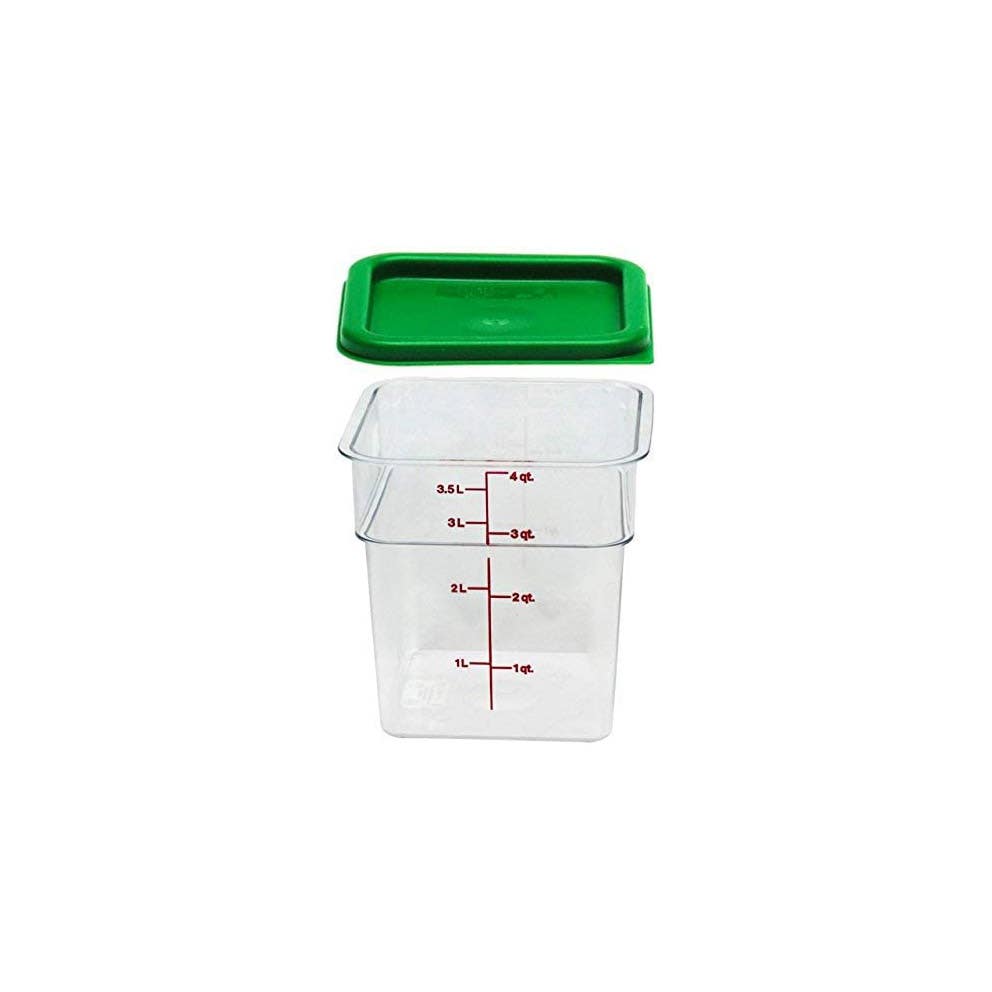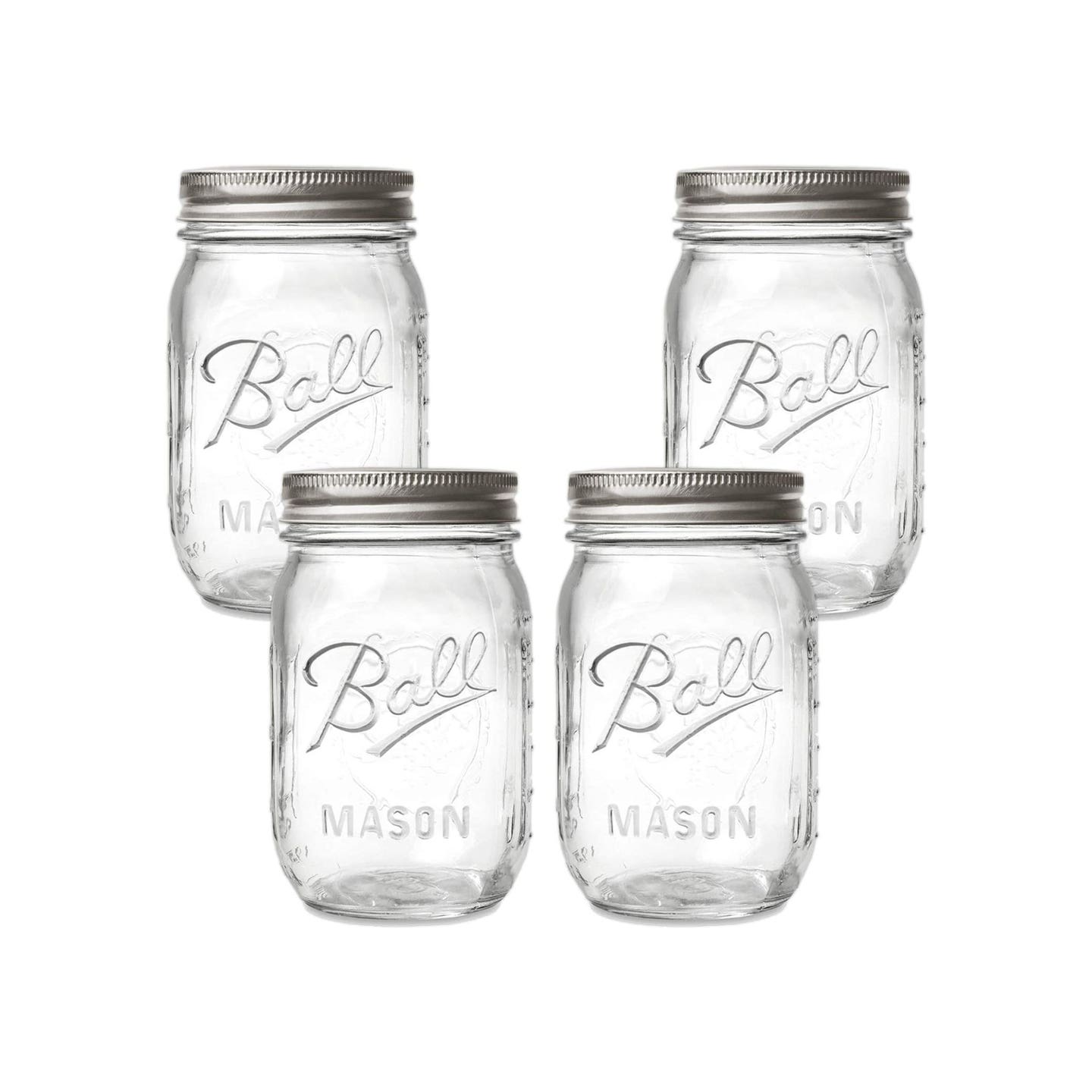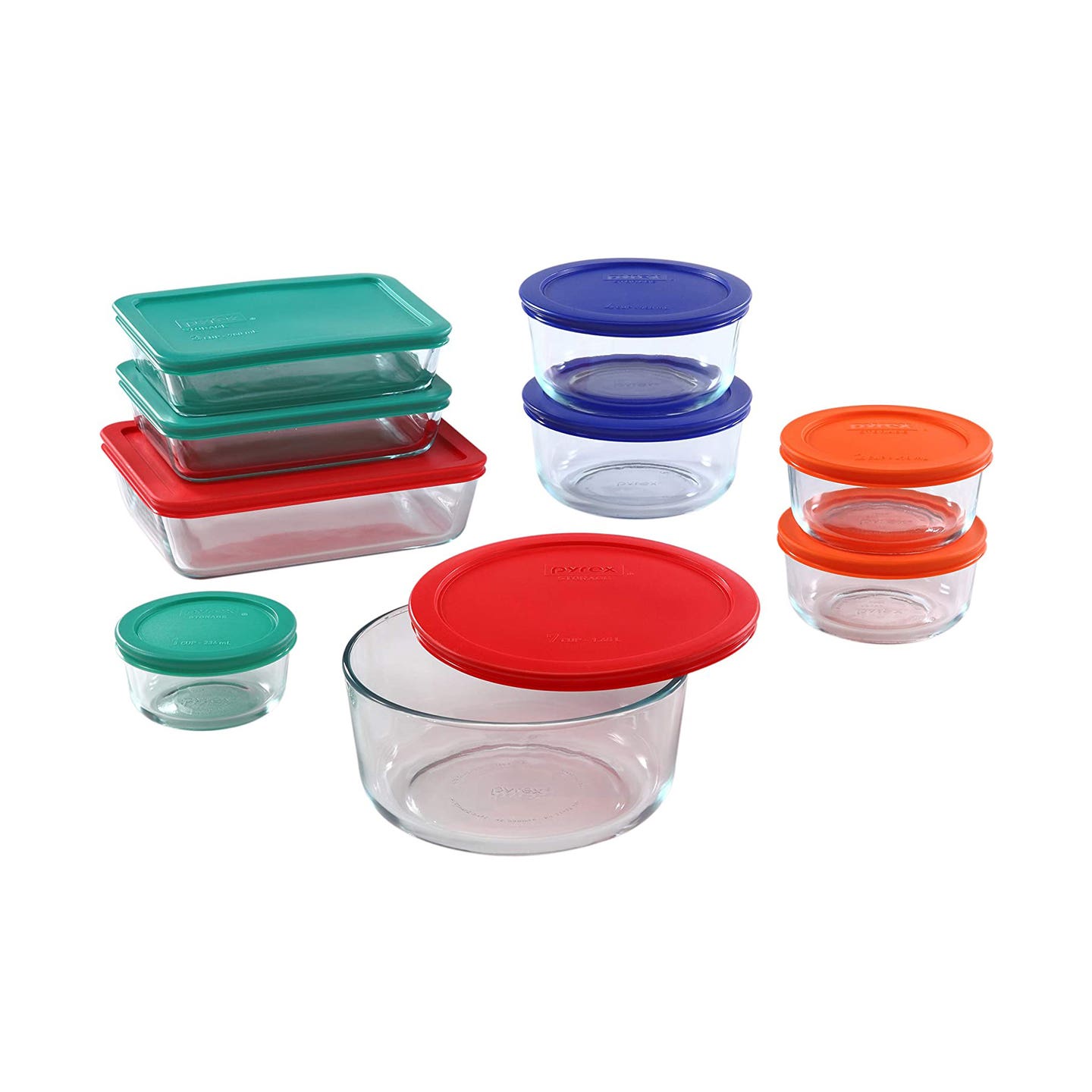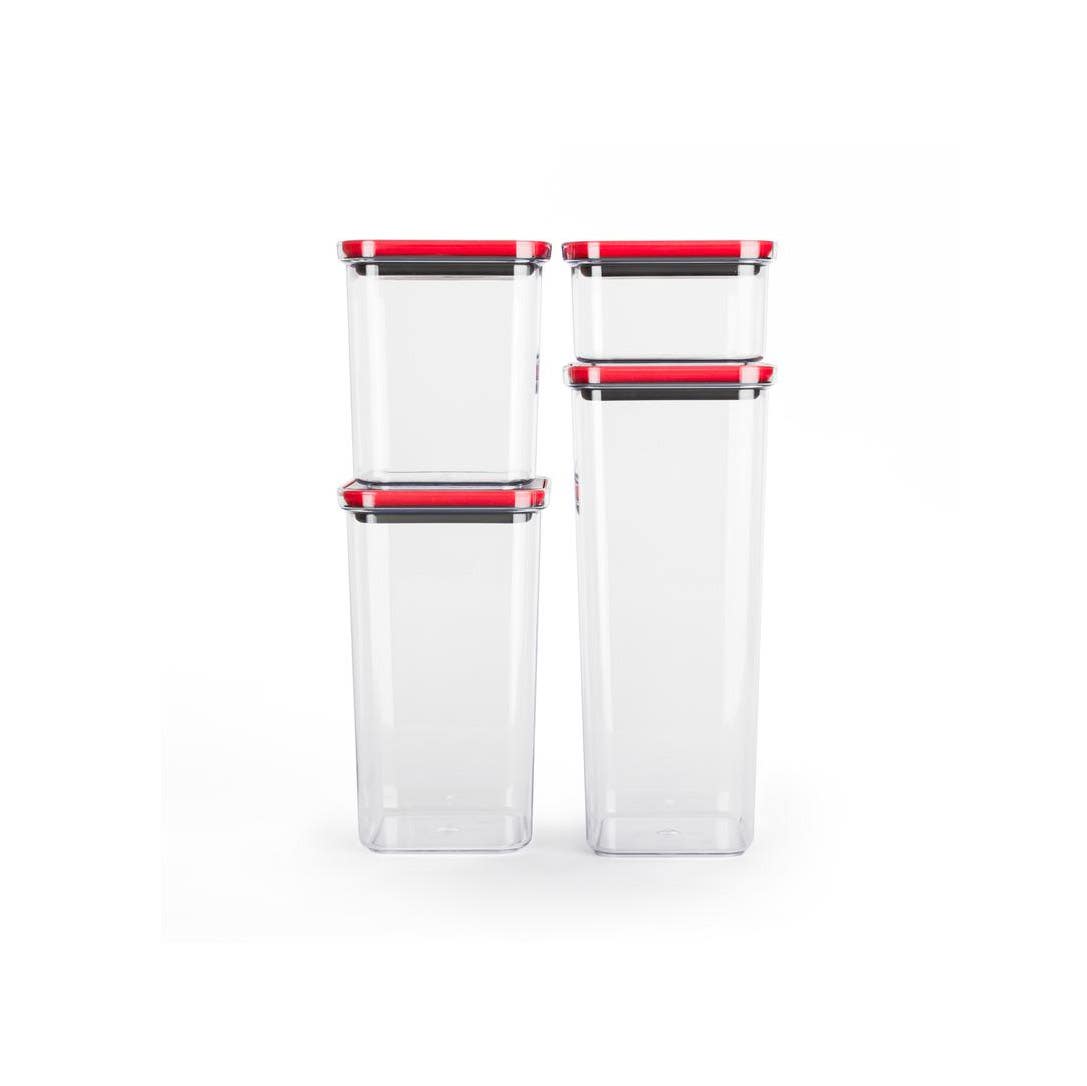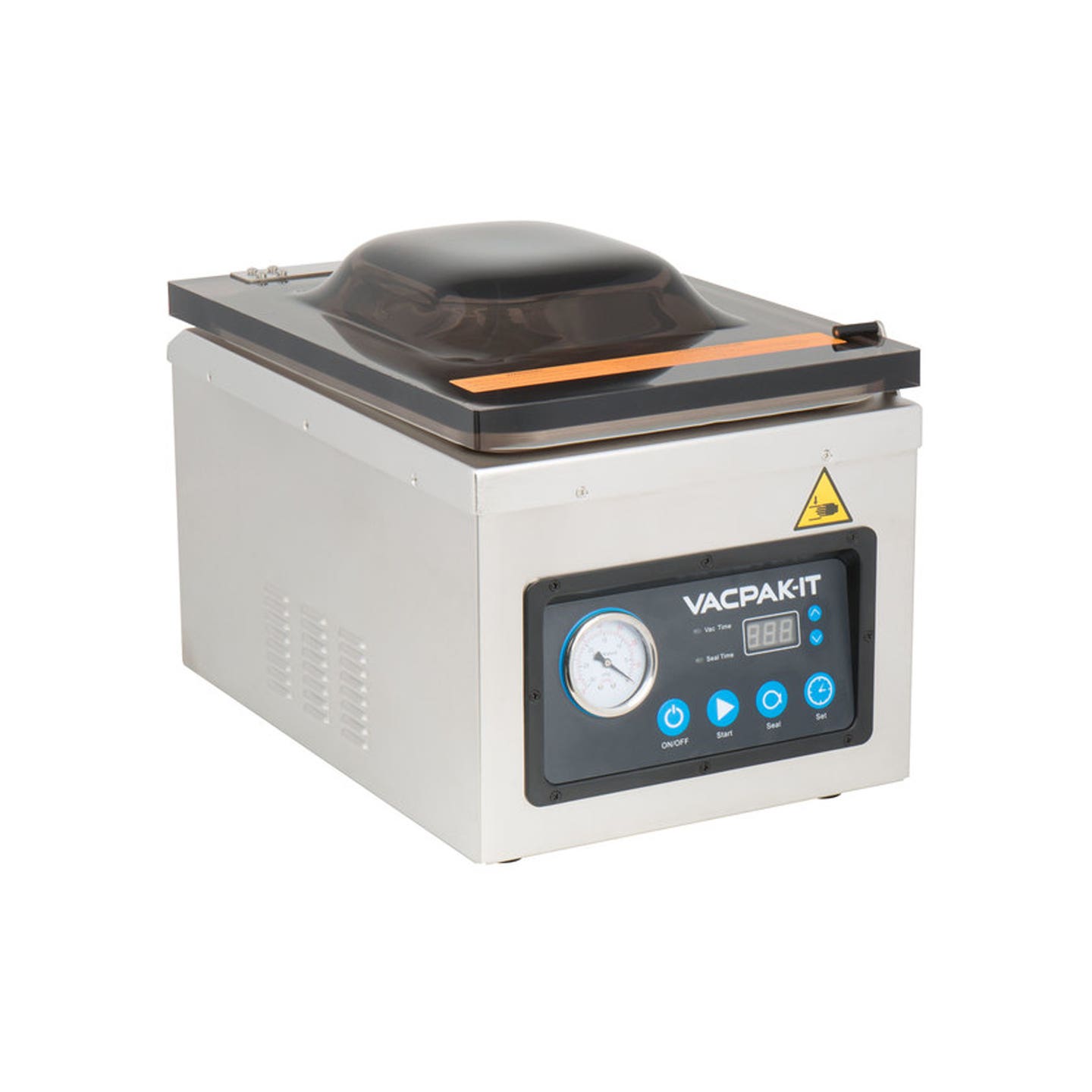The Best Food Storage Containers Do So Much More Than Prevent Spills
They’ll improve ingredient quality, for starters.
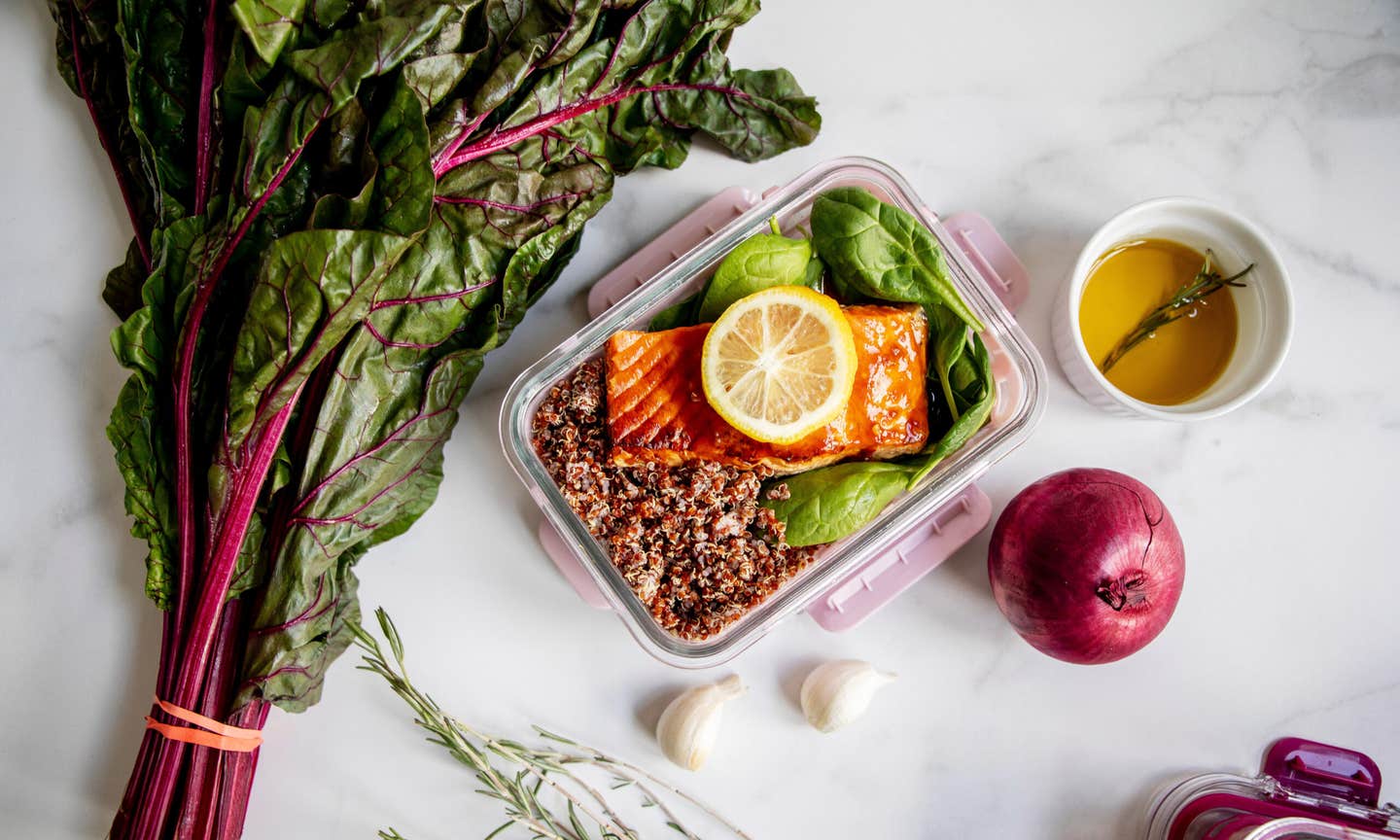
If you’ve ever encountered a surprise oil slick on a fridge shelf, a spice rack mishap, or freezer burned anything (haven’t we all?), you know that subpar containers are a major cooking buzzkill. An annoying inconvenience at best and a messy disaster at worst, food storage snafus can be reason enough to abort whatever you’re whipping up and opt for delivery instead.
But storing smarter—whether in glass containers or high-quality, durable plastic—can make meal preparation far better. And, since the pros are used to cooking and storing ingredients in far larger quantities than home cooks, we tapped a few experts to share their storage solutions on the line and in the comfort of their own kitchens.
- Best Overall: Cambro Polycarbonate Square Food Storage Containers
- Best Value: Ball Regular Mouth Mason Jars
- Best Set: Pyrex Simply Store Meal Prep Glass Food Storage Containers, 18-Piece Set
- Best Pantry Storage: Neoflam Smart Seal Airtight Canisters
- Best Splurge: VacPak-It VMC100P Chamber Vacuum Packaging Machine
Features to Keep in Mind
Material
Food storage containers are available in a wide range of materials, with pros and cons for each; what you choose is really a matter of personal preference. Hard plastic is the go-to for chef Joe Schafer of Earth at Hidden Pond in Kennebunkport, Maine because it’s dishwasher-safe, durable, and stackable. Josh Buckwald, founder of Orso Pasta in Los Angeles, also opts for this material as it’s “safe, reliable, and solid.” He also loves the versatility of polypropylene. “It can go in the oven, the freezer, the microwave; it looks great, and can be knocked off the counter without breaking; what’s not to like?” he says.
Though flexible plastic is cheap and gets the job done, Buckwald says you run into toxicity risks if you’re planning to heat or microwave it. Therefore, more malleable materials should only be used for cold or room temperature storage. Richard Biondo, executive chef at Morty’s Oyster Stand in Montauk, New York, prefers glass for food storage since “it doesn’t impact the flavor of the ingredients.” Buckwald also likes glass because it’s “pretty and safe, and can withstand a leftover reheat in the oven or microwave.” Schafer prefers to avoid glass, citing that “they break or shatter if they fall, so there’s clean up [and] you’ll have to throw away any food that is exposed or even in the area.”
Lid Type
LaMara Davidson, chef and founder of Cornbread + Kimchi in Dallas, says she prefers vacuum sealed, airtight, or leakproof lids. “Why put fresh food in a container that will only go stale or bad because air or moisture seeped in?” she says. While Buckwald likes vacuum-sealing foods for storage when working in commercial kitchens, snap-lock lids are his go-to for at-home use since they’re easier to work with and store when not in use. He adds that while vacuum-sealed containers do elongate the shelf life of most food, they're less essential in a personal kitchen. "The cost and extra effort usually isn't worth it in our house, where leftovers never last too long,” Buckwald says.
Size
Size-wise, Buckwald suggests having 1-quart and 1-pint containers on hand, “as they'll cover pretty much all your needs.” Other than that, he recommends staying pretty moderate scale-wise: “Anything less than a cup is kind of useless, as is anything more than a gallon.”
Set vs. Single Container
Schafer prefers sets to an a la carte approach in order to save space; containers sold together are, he notes, “easily stored within each other when not in use.” Davidson also goes with sets, as “you always need more than just one,” she says. While most pros we spoke to choose sets over one-offs, Buckwald likes buying piece by piece. “It's rare that you're actually going to need everything that comes in a whole set, plus you probably won't end up with enough of the ones you actually do use,” he says.
Our Top Picks
Best Overall: Cambro Polycarbonate Square Food Storage Containers
Best Overall
“Cambros are absolutely everything,” Buckwald raves in reference to these transparent, easy-to-clean containers that are a staple of commercial kitchens, coming in 4-quart, 8-quart, 12-quart, and 22-quart sizes. “They’re an indispensable part of every restaurant operation, and every chef worth his salt has been known to sneak a few home from time to time,” he says. Plus, the lids are sturdy and can stand up to dropping and stacking, a feature Schafer likes, as well.
Best Value: Ball Regular Mouth Mason Jars
Best Value
Biondo is a recent mason jar convert, thanks to all sorts of pandemic cooking projects. “While I was stuck at home, Ball mason jars were vital storage for fermentation, soup, pickling, creating a sourdough starter, and even cooking,” Biondo says, noting he’s been using them in the restaurant as well as at home. “They’re very durable and incredible for storage, and for preserving, jarring, and canning.” He recommends the quart- and pint-size jars as the most versatile, and also suggests the petite, 8-ounce jelly jars as ideal for sauces, marinades, and more. You can DIY a vacuum seal by boiling filled jars to preserve the contents. As the glass cools, it’s sealed when you hear the lid pop. (To wit, Biondo has homemade jarred tomato sauce that’s at least three years old.)
Davidson also loves “good old-fashioned” Ball jars, which she uses for storing liquid items she reaches for regularly, like coffee, soups, and stocks. She suggests buying and using BPA-free plastic tops instead of the metal ones that usually come with mason jars—they’re one piece and easier to use.
Best Set
Davidson loves Pyrex’s glass containers with hard plastic tops so much, she owns two sets. “These are my overall favorite containers because they come in many sizes and are glass, so you don’t have to worry about that potential toxic plastic taste,” she says, adding that she uses them for everything from meal prep to leftovers. (Plus, they're very affordable.) Buckwald is also fond of Pyrex, which he recommends if you're not ready to go “fully industrial” with Cambro containers.
Best Pantry Storage: Neoflam Smart Seal Airtight Canisters
Best Pantry Storage
For dry goods like cereals, pasta, beans, rice, and snacks, Davidson opts for these “stylish, clear containers that truly keep items fresh and easy to get to in your pantry,” she explains. “I love the easy turn-and-lock tops, and they make dry goods look so organized.” They’re also BPA-free and dishwasher-safe.
Best Splurge: VacPak-It VMC100P Chamber Vacuum Packaging Machine
Best Splurge
For storing meats and purees, Schafer prefers to vacuum seal with a VacPak-It machine and bags. The bags take up less space than traditional containers, and allows its contents to flatten out. “More surface area means faster cooling, which makes food last longer,” he explains. Bear in mind size and price, though: You’ll definitely have more room in the fridge and freezer using vacuum-sealed bags, but the hefty machine takes up valuable counter space and is not cheap. And while the VacPak-It is Schafer’s favorite, there are other affordable, highly-rated versions from brands designed and scaled for home cooks versus commercial kitchens (like this NutriChef vacuum sealer, with over 24,000 reviews on Amazon).
Ask the Experts
Are plastic food storage containers toxic?
Some may be, which is why Davidson chooses glass over plastic containers whenever possible, and for limited plastic use, she sticks strictly to BPA-free plastic. “I don’t think we can afford not to pay attention, considering all we’ve learned over the last few years about the toxins that are in plastics,” she says.
How do I clean glass and plastic food storage containers?
“Plastic is porous, so you want to scrub really well, sanitize, and use extra soap to get proteins out and avoid cross-contamination of allergens,” Schafer says. Machine-washable containers are non-negotiable for Davidson: “I don’t even purchase items that aren’t safe in the dishwasher these days,” she says. If you’re without a dishwasher, she says her strategy for getting an ultra-thorough clean by hand is a cap full of bleach per gallon of water.
Keep Reading
Continue to Next Story
